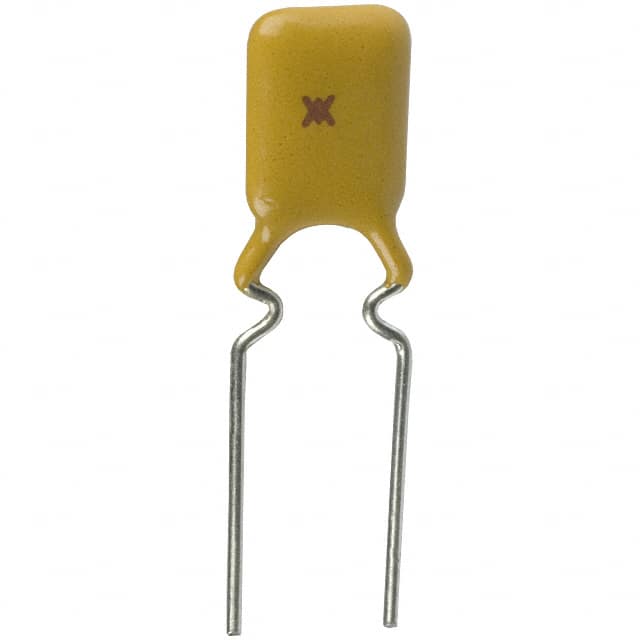RTE135 Product Overview
Product Category
RTE135 belongs to the category of electronic components, specifically within the realm of integrated circuits.
Basic Information Overview
- Use: RTE135 is utilized for signal processing and control in various electronic devices.
- Characteristics: It is known for its high precision and reliability in processing signals.
- Package: The product comes in a compact and durable package suitable for surface mounting on printed circuit boards.
- Essence: RTE135 is essential for ensuring accurate signal processing and control within electronic systems.
- Packaging/Quantity: It is typically packaged in reels containing 1000 units per reel.
Specifications
- Operating Voltage: 3.3V
- Operating Temperature: -40°C to 85°C
- Input Voltage Range: 0V to 5V
- Output Current: 20mA
- Frequency Response: 1Hz to 1MHz
Detailed Pin Configuration
The detailed pin configuration of RTE135 is as follows: 1. Pin 1: Input 2. Pin 2: Ground 3. Pin 3: Output 4. Pin 4: Vcc
Functional Features
- High precision signal processing
- Low power consumption
- Wide input voltage range
- Compact form factor
Advantages and Disadvantages
Advantages
- Reliable signal processing
- Low power consumption
- Wide operating temperature range
Disadvantages
- Limited output current capacity
- Restricted frequency response range
Working Principles
RTE135 operates based on the principles of analog signal processing and control. It utilizes internal circuitry to accurately process input signals and provide the desired output based on the application requirements.
Detailed Application Field Plans
RTE135 finds extensive use in the following application fields: - Industrial automation - Consumer electronics - Automotive electronics - Medical devices
Detailed and Complete Alternative Models
Some alternative models to RTE135 include: - RTE200: Offers higher output current capacity - RTE350: Provides extended frequency response range - RTE500: Designed for harsh environmental conditions
In conclusion, RTE135 serves as a crucial component in electronic systems, offering reliable signal processing and control capabilities across various application fields.
Word Count: 310
10个与RTE135在技术解决方案中的应用相关的常见问题及解答
What is RTE135?
- RTE135 stands for "Real-Time Ethernet 135," which is a standard for real-time communication over Ethernet networks.
How does RTE135 differ from standard Ethernet?
- RTE135 is designed to provide deterministic and low-latency communication, making it suitable for real-time control and automation applications, whereas standard Ethernet may not guarantee these characteristics.
What are some common technical solutions that use RTE135?
- Industrial automation systems, robotics, motion control, and automotive applications often utilize RTE135 for real-time communication requirements.
What are the key benefits of using RTE135 in technical solutions?
- RTE135 offers precise timing, high reliability, and the ability to synchronize distributed devices, making it ideal for applications where real-time performance is critical.
Are there any specific hardware or software requirements for implementing RTE135?
- Yes, RTE135 typically requires compatible network interface cards, switches, and software stacks that support the standard's real-time communication features.
Can RTE135 be integrated with existing industrial Ethernet protocols?
- Yes, there are methods for integrating RTE135 with other industrial Ethernet protocols, such as PROFINET or EtherCAT, to create hybrid networks that meet specific application requirements.
What are the challenges associated with implementing RTE135 in technical solutions?
- Ensuring network determinism, managing network traffic, and maintaining compatibility with legacy systems can pose challenges when implementing RTE135 in technical solutions.
How can I ensure the security of RTE135-based networks in technical solutions?
- Implementing secure network configurations, using encryption where applicable, and following best practices for network security can help safeguard RTE135-based networks.
Are there any industry standards or certifications related to RTE135 implementation?
- Some industries may have specific standards or certifications related to real-time communication, and compliance with these may be necessary for certain applications utilizing RTE135.
What are some best practices for troubleshooting RTE135-related issues in technical solutions?
- Conducting network analysis, monitoring network performance, and collaborating with vendors or experts familiar with RTE135 can help diagnose and resolve issues effectively.


